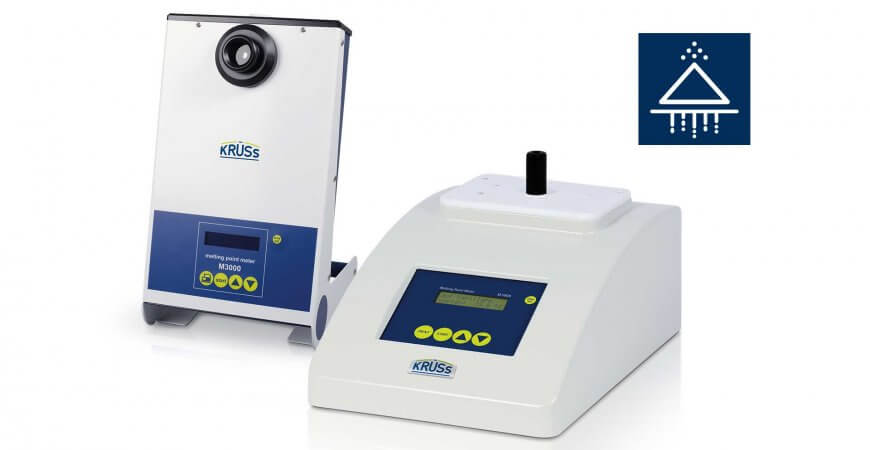
A sample of the material being studied is place in the beaker or crucible, heat is applied, and the temperature is observed. Chart of Common Melting Points SubstanceĪ simple experimental setup for determining melting point can be set up with a beaker or crucible, a thermometer, and heat source such as a Bunsen burner. Differences in melting point is the basic reason different substances are found in different phases (solid, liquid, gas) at the same temperature. All of these small, seemingly minute interactions are important for determining how much energy it takes to get molecules to move from a solid to liquid form. Scientists have found many other molecular interactions which influence melting point, such as van der Waals forces, molecular symmetry, and atomic forces with determine the interaction and stability of different substances.
#Melting point measure series#
This series of interactions stabilizes the entire solution, and lowers the melting point of the solution in general. In a solution of water, these molecules interact with each other to create hydrogen bonds, or weak bonds between the hydrogen of one water molecule and the oxygen of the next. Water is a polar molecule, meaning that different areas of an individual molecule have different electrical attractions.

When you consider substances like water, the melting point is largely determined by the interactions between the molecules themselves. Using this method of increasing the pressure, scientists have been able to solidify typically gaseous substances.Ī third thing that influences melting point is the structure of the substances themselves. Thus, if you increase the pressure the melting point also increases. Melting point is also heavily affected by pressure, which pushes the molecules together. Melting point is not only affected by temperature because temperature is not the only thing that affects the movement and energy of molecules and atoms. However, mercury has a melting point of -38 degrees Celsius, or around -38 degrees Fahrenheit. This means that at most temperatures experienced, mercury will remain a liquid and can accurately measure the temperature. Mercury makes a perfect metal for thermometers because it has an unusually low melting point for a metal. As the molecules bounce off of each other, they expand the liquid and it travels up the thermometer. As the temperature rises, the mercury gets warmer and has more energy between individual molecules of mercury. The small chamber extends up the thermometer as a narrow tube. This chamber of mercury is measured to a specific size, and filled with a certain volume of mercury. In side of the thermometer is mercury, as seen in the image below. While heat does come from these sources, overall temperature is really a measurement of how quickly molecules are moving and the energy they have to repel each other.Ĭonsider a thermometer, the device used for measuring the temperature. Temperature, as we experience it, seems to be heat sources such as the sun or a fire.

#Melting point measure free#
The first of those is temperature, which directly influence the amount of free energy available to all atoms and molecules within a system. There are several interactions studied in chemistry which determine a substance’s melting point. Interactions that Determine Melting Point Because of the differences in atoms and how they interact, one substance can have a different melting point compared to a similar molecule with atoms in a different arrangement. The exact melting point of a substance is determined by many factors, which determine how the atoms within a molecule interact and bond with each other. When exposed to room temperature air, the drastic change that much past the melting point causes sublimation, or direct conversion of carbon dioxide into a gaseous vapor. This material has a melting point of -56 degrees Celsius (-69 degrees Fahrenheit). Carbon dioxide, in its solid form, is commonly known as dry ice. In other words, they require a lot of energy between the atoms in order for the substance to become a liquid.īy contrast, most substance that we experience normally as gases, such as oxygen and carbon dioxide, have a relatively low melting point.

Some materials, like metals, glass, and other substances which are solid at room temperature have a high melting point. The melting point of any given substance is the temperature at which the substance experiences melting, or the moment that the substance changes from a solid into a liquid.


 0 kommentar(er)
0 kommentar(er)
